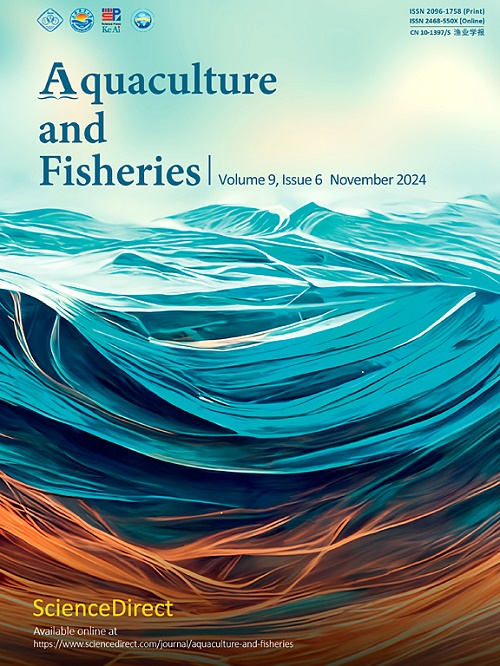Expression of gastrin and cholecystokinin B receptor in Lateolabrax maculatus
Abstract
Gastrin (gas) is a peptide hormone that stimulates gastric acid secretion by gastric parietal cells and stimulates gastric motility. The cholecystokinin B receptor (cckbr) can act as a receptor for gastrin, conveying regulatory information on gastrin, but there are fewer studies on its function in fish. The Lateolabrax maculatus is one of the marine aquaculture species in China, it widely distribute in coastal areas. In the study, we cloned the genes of Lateolabrax maculatus gastrin (Lm-gas) and Lateolabrax maculatus cholecystokinin B receptor (Lm-cckbr). The results showed that the full-length gene of Lm-gas is 638bp and the carboxy-terminal conserved domain (DFGRR) is the core functional domain of gastrin protein. The Lm-cckbr gene has a total nucleotide sequence of 2066 bp, and the open reading frame encodes a total of 453 amino acids. The result of protein sequence alignment showed that the similarity between Lm-cckbr protein and other different species was 50.11%–89.67%. The PCR results showed that Lm-gas and Lm-cckbr were expressed in brain and stomach. Further localization by immunehistochemical staining showed that Lm-gas protein was located in the mucosal layer of the gastric wall, but the expression signal was weak in the brain. Hunger causeed a significant decrease in these two genes. The results provided basic research data for further study on the function of Lm-gas and its recepter Lm-cckbr in the in the central nervous system and digestive system of Lateolabrax maculatus.

 求助内容:
求助内容: 应助结果提醒方式:
应助结果提醒方式:


